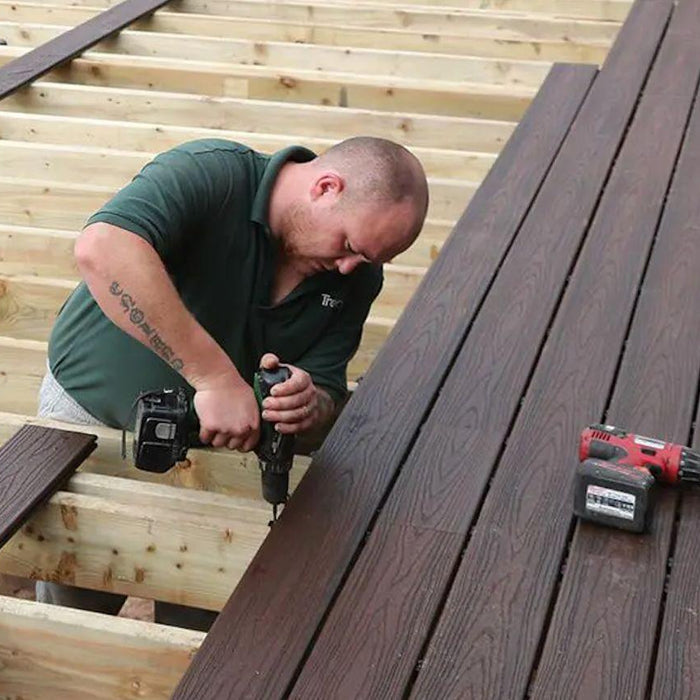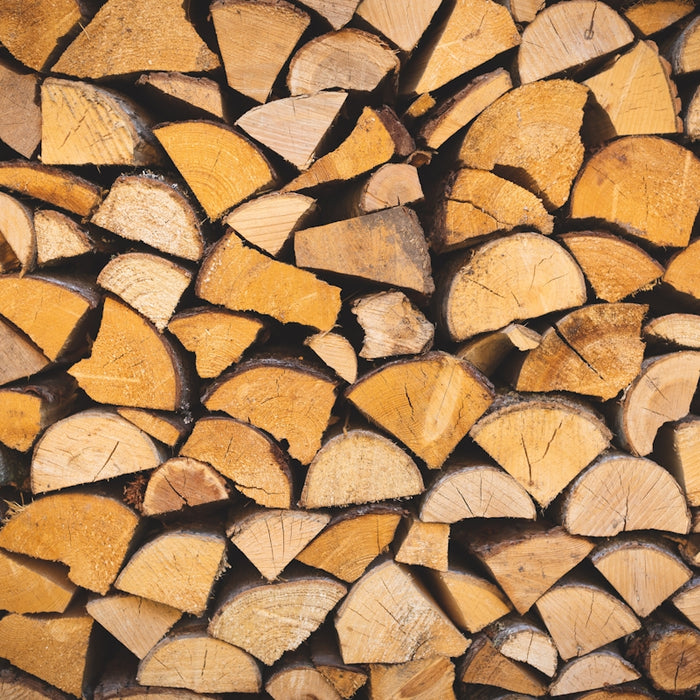When you're looking to add a touch of rustic charm to your outdoor space, loglap cladding is an excellent choice. Its traditional tongue and groove joint system guarantees a snug fit, minimising gaps for a secure seal. The horizontal boarding pattern creates a sense of width, making your shed or cabin appear more spacious. You'll love the natural beauty and unique charm it brings to your outdoor structure. But what makes loglap cladding truly special is its versatility - and that's where things get really interesting. You're about to discover the many ways to customise this cladding style to fit your vision.
Benefits of Loglap Cladding
By choosing loglap cladding, you'll experience a multitude of benefits that can elevate your building's aesthetic appeal and performance.
Unlike shiplap, loglap cladding features a tongue and groove joint system, ensuring a snug fit and minimising gaps. This design allows for a more secure and weather-tight seal, protecting your timber from the elements.
Additionally, loglap cladding is typically treated to resist rot and insect damage, further extending its lifespan.
The rustic, natural beauty of loglap cladding adds a unique charm to your shed or cabin, making it an ideal choice for those seeking a traditional, countryside look.
In addition, the horizontal boarding pattern creates a sense of width, making your building appear more spacious.
With loglap cladding, you can achieve a stunning exterior that not only looks great but also performs well.
Choosing the Right Timber
You'll want to select a timber that's durable, resistant to rot, and can withstand the elements, as the right choice will greatly impact the overall performance and appearance of your loglap cladding.
When it comes to choosing the right timber for your loglap cladding, you've got a few options to weigh. Western Redwood is a popular choice due to its natural resistance to rot and insect damage. It's also a cost-effective option that's easy to work with.
Another option is treated timber, which has been pressure-treated to resist rot and insect damage. Just make sure to check the treatment level is suitable for outdoor use.
When selecting your timber, look for pieces that are straight-grained and free of knots. A tongue-and-groove profile is also essential for a seamless loglap cladding installation.
Understanding Treatment Options
Selecting the right treatment for your loglap cladding timber is crucial, as it can greatly extend the lifespan of your exterior design feature.
You'll want to weigh the treatment process that best suits your needs and the type of timber you're using. For instance, if you opt for a tanalised treated timber loglap, you'll benefit from enhanced protection against rot and insect damage. On the other hand, pressure treated timber can provide an even higher level of protection, making it ideal for areas prone to high moisture levels.
When choosing a treatment, you must take into account the specific requirements of your project. For example, if you're using loglap planed tongue and groove for a shed or cabin, you may want to opt for a treatment that provides additional protection against the elements.
Additionally, you should also bear in mind the aesthetic appeal of the treatment, as some options may alter the appearance of the timber. By understanding the different treatment options available, you can make an informed decision that guarantees your loglap cladding looks great and lasts for years to come.
Tanalised Vs Pressure Treated
When it comes to protecting your loglap cladding from rot and insect damage, two popular treatment options stand out: tanalised and pressure treated timber. Both options aim to extend the lifespan of your treated loglap, but they differ in their application and benefits.
Three key differences exist between the two:
-
Treatment process: Tanalised timber is treated with a preservative that's absorbed into the wood, while pressure treated timber is forced into the wood under high pressure.
-
Protection level: Pressure treated timber offers a higher level of protection against rot and insect damage, especially in high-risk areas like ground contact.
-
Appearance: Tanalised timber tends to retain its natural appearance, while pressure treated timber can have a slightly altered color and texture.
Ultimately, the choice between tanalised and pressure treated loglap cladding depends on your specific needs and preferences.
If you're looking for a more natural appearance and a lower level of protection, tanalised might be the way to go.
However, if you need maximum protection and don't mind a slightly altered appearance, pressure treated shiplap cladding could be the better option.
Sustainable Timber Sources
With environmental concerns on the rise, sourcing your loglap cladding from sustainable timber suppliers is essential to minimizing the ecological footprint of your project.
You'll want to opt for timber species that are slow-grown, as they tend to be more durable and less prone to decay. This means they'll require less maintenance and replacement over time, reducing waste and the demand for new resources.
When selecting a supplier, look for those that adhere to sustainable forestry practices.
This might include suppliers certified by organizations like the Forest Stewardship Council (FSC), which promotes responsible forestry management.
FSC Certification Explained
You'll likely come across the FSC certification when researching sustainable timber suppliers, but what does it really mean? FSC stands for Forest Stewardship Council, a non-profit organization that promotes responsible forestry practices. When you choose FSC-certified timber, you're supporting sustainable forestry management that prioritizes the environment, wildlife, and local communities.
FSC-certified timber is sourced from well-managed forests, guaranteeing that the wood is durable and of high quality.
Three key benefits of FSC-certified timber are:
-
Premium quality: FSC-certified timber is sourced from well-managed forests, guaranteeing that the wood is durable and of high quality.
-
Longevity: By choosing FSC-certified timber, you're investing in a product that's designed to last, reducing the need for frequent replacements and waste.
-
Environmental responsibility: FSC certification verifies that the timber is harvested in a way that minimizes harm to the environment and supports the conservation of forests.
Measuring and Cutting Loglap
Measure your loglap cladding carefully to guarantee a precise fit, taking into account the width and length of each board, as well as the spacing between them.
You'll want to verify that you've got the right measurements before you start cutting, as mistakes can be costly and time-consuming to rectify. Start by measuring the length of your timber, making sure to account for any obstructions or irregularities in the surface you're cladding.
Then, measure the width of each board, taking into account the overlap between each loglap piece.
When you're happy with your measurements, it's time to start cutting your loglap cladding.
Use a high-quality saw to achieve clean, precise cuts, and work methodically to avoid mistakes. Remember to cut your loglap slightly oversized, as you can always trim it down to fit.
Don't be tempted to rush this process – taking your time to measure and cut your loglap carefully will pay off in the long run, guaranteeing a professional-looking finish that will stand the test of time.
Installation Made Easy
To guarantee a stress-free installation, prepare your site by clearing the area of debris and obstructions, and make sure your loglap cladding is within easy reach. This will save you time and energy in the long run.
Proper planning is key as you're about to embark on your timber-DIY project.
Check your delivery: Ensure that your loglap cladding has arrived in good condition and that all the necessary components are included.
Start with a solid base: Begin by installing the tongue and groove boards, making sure they're level and secure.
Work from the bottom up: Install your loglap cladding from the bottom of your shed or cabin, working your way up to avoid any water ingress.
Finishing Touches and Stains
With your loglap cladding installation complete, it's time to add the finishing touches that'll make your shed or cabin stand out from the crowd.
Now, it's all about enhancing the aesthetic of your rustic retreat. To start, consider applying a preservative to protect your loglap cladding from the elements. This won't only extend the life of your cladding but also maintain its rustic charm.
Next, think about adding stains to bring out the natural beauty of the wood. You can choose from a range of stains to achieve the desired look, from subtle, earthy tones to richer, more dramatic hues.
Remember to select a stain that complements the natural color of your loglap cladding to create a cohesive look. By adding these finishing touches, you'll be able to enjoy your rustic shed or cabin for years to come.
Popular Timber Species Options
What type of timber species will you choose to create the perfect rustic look for your loglap cladding? With so many options available, it can be overwhelming. However, some species stand out for their durability, aesthetic appeal, and ease of maintenance.
Three popular timber species options for your loglap cladding are:
-
Treated Pine: A cost-effective and durable option, treated pine is resistant to rot, decay, and insect damage. It's also easy to work with and can be stained or painted to match your desired color scheme.
-
Western Red Cedar: This timber species is renowned for its natural beauty, with a warm, rustic tone that adds character to any shed or cabin. It's also resistant to rot and insect damage, making it a great choice for outdoor applications.
-
Larch: A sustainable and eco-friendly option, larch is a durable and versatile timber species that can be used for both interior and exterior cladding. It has a natural resistance to decay and insect damage, making it a great choice for loglap cladding.
When selecting your timber species, take into account factors like durability, maintenance requirements, and aesthetic appeal so that your loglap cladding looks great for years to come.
Shiplap Vs Tongue and Groove
You're likely wondering which profile style is best for your loglap cladding: shiplap or tongue and groove. Both options are popular for a rustic look, but they've some key differences.
Shiplap is a type of loglap cladding where the timber boards have a rabbet joint, creating a seamless appearance. The boards are planed to fit together snugly, allowing for a smooth, flat surface.
On the other hand, tongue and groove loglap cladding features a groove cut in one board and a corresponding tongue on the adjacent board. This design allows for easy installation and a secure fit.
When choosing between shiplap and tongue and groove, consider the look you want to achieve. Shiplap provides a more modern, sleek appearance, while tongue and groove has a more traditional, rustic feel.
Both options can add charm to your shed or cabin, but it ultimately comes down to personal preference. Regardless of which style you choose, loglap cladding is a great way to add character and texture to your outdoor structure.
Insulation and Cladding Together
Combining insulation and loglap cladding creates a robust, energy-efficient exterior that protects your shed or cabin from the elements while showcasing the beauty of natural wood.
You'll be able to enjoy the rustic look of loglap cladding while keeping the cold out and the warmth in.
When you pair insulation with loglap cladding, you're creating a durable barrier against the elements. The insulation helps regulate the temperature inside your shed or cabin, while the loglap cladding provides an additional layer of protection.
-
Energy Efficiency: Insulation helps reduce heat loss, keeping your energy bills low.
-
Weather Resistance: Loglap cladding protects your timber from harsh weather conditions, ensuring it lasts for years to come.
-
Aesthetics: The natural beauty of the loglap cladding boards adds a rustic charm to your exterior, making it a great choice for sheds and cabins.
Machine Profile Vs Planed Finish
Now that you've achieved a robust exterior with insulation and loglap cladding, it's time to examine the finer details, specifically the finish of your loglap cladding, where a machine profile and planed finish offer distinct differences.
When it comes to machine profile, the boards are machined to create a rustic, textured look that's perfect for a cabin or shed. The profiling process gives the boards a unique, rugged appearance that's full of character.
On the other hand, a planed finish is smoother and more refined, making it ideal for those who want a more contemporary look.
Both options are available in tongue and groove boards, ensuring a seamless fit and a premium finish.
If you're looking for a sustainable option, consider our premium FSC-sourced loglap cladding, which is both environmentally friendly and durable.
Ultimately, the choice between a machine profile and planed finish comes down to personal preference and the style you're aiming to achieve. Whether you're going for a rustic, country look or a sleek, modern design, loglap cladding can help you get there.
Loglap Cladding Maintenance Tips
As you enjoy your newly installed loglap cladding, regular maintenance is essential to prolong its longevity and continued aesthetic appeal.
To maintain your timber loglap cladding's durability and resistance to harsh weather conditions, follow these simple maintenance tips:
Inspection is key
Regularly inspect your loglap cladding for signs of damage, rot, or decay. Check for any cracks, splits, or gaps, and address them promptly to prevent further damage.
Cleanliness is important
Keep your loglap cladding clean by gently washing it with soap and water. This will help remove dirt, grime, and mildew that can damage the timber over time.
Protective coatings are necessary
Apply a protective coating to your loglap cladding to shield it from the elements. This can include waterproofing treatments, stains, or sealants, depending on your specific needs and preferences.
Cost-Effective Loglap Solutions
You can achieve a stylish and rustic look with loglap cladding without breaking the bank by opting for cost-effective solutions that prioritize functionality and value.
One way to do this is by choosing timber that's sustainably sourced and locally available, reducing transportation costs and supporting local economies. Additionally, consider using reclaimed or recycled timber for your loglap cladding, which can be just as durable and attractive as new timber at a lower cost.
When it comes to installation, DIY enthusiasts can deliver significant cost savings by taking on the task themselves. However, if you're not comfortable with the installation process, consider hiring a local contractor who can provide quality work at a competitive rate.
Be sure to research and compare prices for loglap cladding materials and labor to guarantee you're getting the best value for your money. By taking these cost-effective approaches, you can create a beautiful and rustic shed or cabin that fits your budget and delivers on quality.
With loglap cladding, you can have the rustic look you want without sacrificing your wallet.
Conclusion
As you step back to admire your rustic retreat, the loglap cladding's natural beauty shines like a beacon, transporting you to a simpler time.
With its unique charm and countryside feel, your shed or cabin is now a haven that whispers stories of the past.
By following these expert tips, you've not only achieved a rustic look but also built a structure that's both durable and sustainable.




